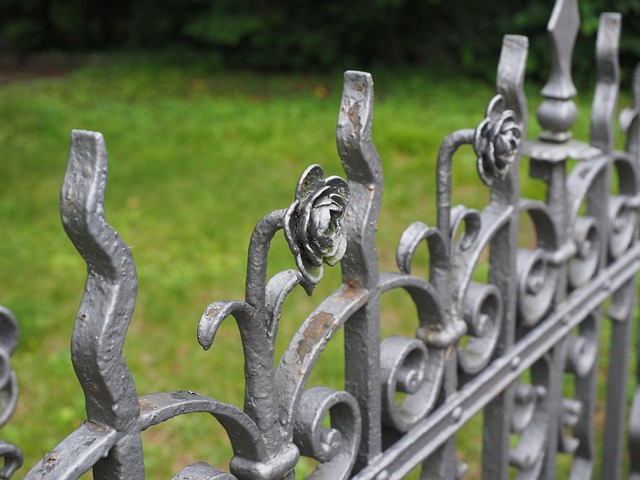When considering wooden fence installation in New Bedford, Massachusetts, understanding your options and proper planning are key to a successful project. This guide covers everything from selecting the right style to meet your property’s unique needs, navigating local regulations, and ensuring long-lasting durability. We’ll walk you through each step, from initial measurement and preparation to the final installation process and essential maintenance tips, helping you create a secure and aesthetically pleasing fence.
- Understanding Wooden Fences: Styles and Benefits
- Choosing the Right Fence for Your Property
- Preparation: Measuring and Planning Installation
- Installation Process: From Post Placement to Finishing Touches
- Ensuring Durability and Maintenance Tips
- Local Regulations and Permits for Fence Installation
Understanding Wooden Fences: Styles and Benefits
Wooden fences offer a timeless aesthetic appeal, enhancing the curb appeal of any property in New Bedford, Massachusetts. They come in various styles, from traditional picket fences to elegant privacy panels, each serving unique purposes and design preferences. The benefits of wood extend beyond aesthetics; it’s a durable material that can withstand harsh weather conditions, making it a sustainable choice for homeowners. Wooden fences also provide excellent privacy, security, and noise reduction, creating a peaceful outdoor space.
These fences are versatile, suiting various landscape designs, from rustic backyard retreats to formal garden settings. They offer both visual appeal and practical advantages, such as defining property boundaries, protecting gardens from wildlife, and providing safe play areas for children. Additionally, wood can be customized with different finishes, stains, or paints to match any home’s exterior, ensuring a seamless integration into your landscape.
Choosing the Right Fence for Your Property
When considering a wooden fence installation, selecting the right type is paramount to enhancing your property’s aesthetics and security. The first step involves evaluating your unique needs and preferences. Think about factors such as privacy, security, and the desired visual appeal. For instance, if privacy is a priority, a solid wood fence with a traditional design can provide an effective barrier while adding timeless charm to your outdoor space. Conversely, if you seek a more open look, a picket fence offers both aesthetic versatility and light penetration.
Additionally, consider your property’s layout and surrounding environment. Fences come in various heights and styles, from low-lying hedges that define garden borders to tall, robust fences suitable for securing backyard play areas. The right choice complements your landscape, blends with the natural surroundings, or creates a striking contrast—all while aligning with local building codes and neighborhood aesthetics.
Preparation: Measuring and Planning Installation
Before any wooden fence installation begins, meticulous preparation is key. The initial step involves measuring the area thoroughly to determine the exact dimensions for the fence. This includes assessing the terrain and identifying any obstacles or unique features that may impact the installation process. Property owners should also decide on the style and height of the fence, as well as choose the type of wood, pickets, and other customization options.
A detailed plan is then created based on these measurements and preferences. This involves marking out the fence line, identifying the posts’ locations, and considering any additional structural supports required for a secure installation. Proper planning ensures that the final fence not only meets aesthetic expectations but also provides adequate security and privacy for the property.
Installation Process: From Post Placement to Finishing Touches
The installation process for a wooden fence begins with meticulous post placement. Professionals carefully dig holes and set posts, ensuring they’re level and secure. Once the posts are in place, horizontal rails are attached, providing a framework for the fence panels. These panels, usually made of sturdy wood like cedar or pressure-treated pine, are then fitted into the rails, securely fastened with nails or screws. The finishing touches involve adding gate hardware if necessary, trimming excess material, and applying a protective coating to enhance durability. This meticulous process guarantees a robust and aesthetically pleasing fence that can withstand the elements for years to come.
Ensuring Durability and Maintenance Tips
When it comes to wooden fence installation, New Bedford residents should focus on durability and long-term maintenance. High-quality materials and expert craftsmanship are essential to ensure your new fence can withstand harsh weather conditions, including strong winds and heavy rain. Look for treated wood options that are resistant to rot, mold, and pests, which will save you from costly repairs or replacements in the future.
Regular cleaning and inspection are key maintenance tips. Remove any debris or leaves that accumulate on the fence surface to prevent moisture buildup, which can lead to rotting. Check for loose boards, damaged posts, or signs of insect infestation and address these issues promptly. Applying a fresh coat of sealant every few years can also protect the wood and enhance its aesthetic appeal, ensuring your wooden fence remains in excellent condition for many years to come.
Local Regulations and Permits for Fence Installation
When installing a wooden fence in New Bedford, Massachusetts, it’s crucial to be aware of local regulations and permits. The city or town often has specific guidelines regarding fence height, materials, and placement to maintain neighborhood aesthetics and safety standards. Failing to comply with these rules can result in fines or delays in the installation process.
Before beginning any construction, homeowners should contact their local building department to inquire about necessary permits. Each permit application typically requires detailed plans outlining the fence’s design, dimensions, and location. Staying informed and compliant ensures a smooth installation process and prevents potential legal issues down the line.
